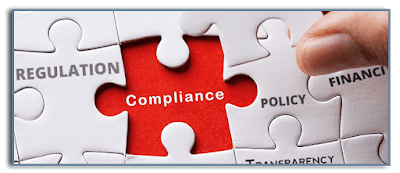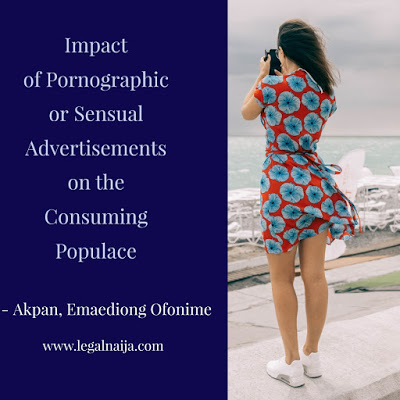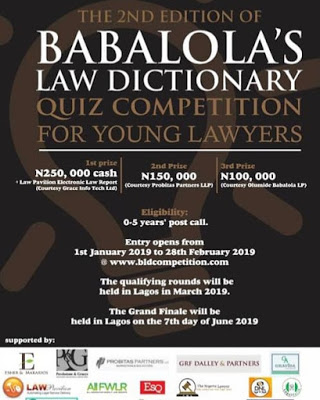
Quick Review Of The CBN’s Anti-Money Laundering/Combating The Financing Of Terrorism (Aml/Cft) Policy And Procedure Manual | B.K. SAKA

prevent money laundering in the country called the Anti-Money
Laundering/Combating the Financing of Terrorism (AML/CFT) Policy and Procedure
Manual (“The Manual”) just last month (February 2019), with the aim of further
achieving its mandate as set out in the Central Bank Act 2007 (as amended). Within
the scope of the Anti-Money Laundering/ Combating the Financing of Terrorism
(AML/CFT) Policy and Procedure Manual, Money laundering is “the act of directly or indirectly concealing or disguising any fund or
property that is derived from the proceeds of an unlawful activity. Simply put,
it is the process by which “dirty” money is made to look legitimate or “clean”
so that funds may be used freely without any trace of its illicit source”.
guide workers and the Bank conduct business in accordance with Anti-Money
Laundering laws and guidelines. The manual intends to set up systems and least
models to shield the CBN from being utilized as a channel to launder cash,
finance terrorism and different types of monetary violations.
against establishing correspondent banking relationships with high-risk foreign
banks such as shell banks, with correspondent banks that have historically
allowed their institutions to be used for Money Laundering / Financing
Terrorism (ML/FT).
exchanges directed through correspondent banking relationships will be overseen as per a hazard-based methodology, and Know
Your Correspondent (KYC) strategies will be built up to discover whether or
not the correspondent bank or the
counterparty is itself managed for money laundering counteractive action.
where controlled, the correspondent shall verify the identity of its clients as per Financial Action Task Force (FATF)
benchmarks, and where this isn’t the situation, extra due diligence will be required to determine and evaluate the correspondent’s
internal policy on money laundering and KYC
methodology.
that care ought to be taken while doing business with third parties situated in
geographic areas with a past filled with supporting terrorism, bases for drug
production/distribution, suffering from civil unrest/war.
that it will acknowledge clients after due confirmation of clients’
personalities, address and additionally place of business, in the wake of
finding out their wellspring of income /reserves and in the wake of considering
the dimension and level of dangers they pose on the bank based on the kind of
business under consideration.
will be taken to apply a proper dimension of due diligence, contingent upon
clients’ risks profiles including that no account will be opened for unknown or
‘made up’ clients. The apex bank would not go into an association with a
prospective client until the individual/entity has been appropriately
recognized and confirmed. The client acknowledgment process likewise
incorporates guaranteeing that the prospective client isn’t on the ‘watch-list’
which includes names of quarantined people and known fraudsters. All organisations that wish to
establish account or business relationship with the bank would be providing
proof of address while operators of the account shall be required to provide
other forms of identification such as international passports/drivers’ licence/national
identity card and Bank verification Number, (BVN). This is to ensure the
veracity and authenticity of whosoever the bank is dealing with, and also make
such person traceable, in cases of disappearance.
will conduct customer due diligence on a risk-sensitive basis to ensure our limited
resources and focused on the higher accounts and/or transactions. The categories
to be used are Simplified Due Diligence and Enhanced Due Diligence depending on
the nature of the risk involved. The Chief Compliance Officer of the bank shall
collate and present the different reports to the banks management and the audit
committee of the board, for instance the special reports on funds transactions,
swift sanction screening reports, testing for adequacy of AML/CFT Policy compliance and the New
area of AML/CFT risks.
blowers shall be protected by the bank if they are threatened or likely to be
exposed to risk as a result of reporting any unethical conduct, an employee who
harasses and threatens a whistle blower shall be disciplined in line with the provisions
of the Human Resources Policy and Procedure Manual (HPRRM).
crimes becoming more common than any other time in recent memory, it is vital
that the financial organizations and governments create strategies to check it.
Likely the most widely recognized method for doing as such is to implement
anti-money laundering policies that
keep the sneaking of illicitly gotten assets. Most nations currently have their
very own anti-money laundering approaches, and many necessitate that
every single monetary institution entirely submit to these arrangements so as
to help endeavours against money related crimes.
laundering policies regularly
require most entities that total monetary exchanges to keep careful records of
their customers’ accounts and transactions. In the event that they run over any
data that gives off an impression of being suspicious, they are required to
report it to the relevant governmental bodies for further examination. Monetary
organizations are vital for the accumulation of financial intelligence, and the
open part enormously relies upon them so as to gather information. Also, anti-money
laundering policies require financial institutions to occasionally record reports with
respect to their customers and completed transactions.
and regulations in Nigeria, implementation has always been the problem, the
will power and the impartiality of anti-graft agencies, sincerity and
commitment to national financial integrity on the part of local banks as well
as responsibility and responsiveness of the CBN is key to achieving financial
sanity, if all stakeholders don’t come on board to work things out, we would
keep making laws and policies to no productive end. Thus, the CBN has more work
to do, the manual is laudable, but making it work is most important.
QUESTIONS:
@_Kolamiposi
kbasyt@gmail.com



